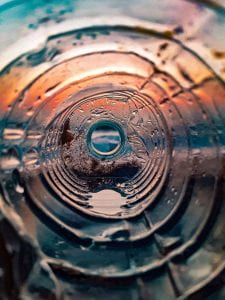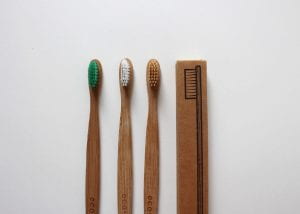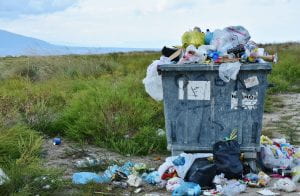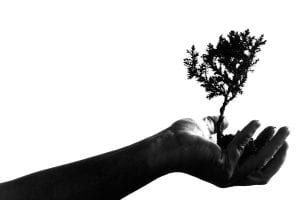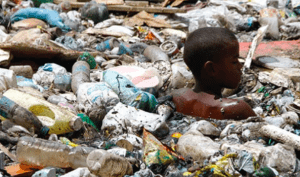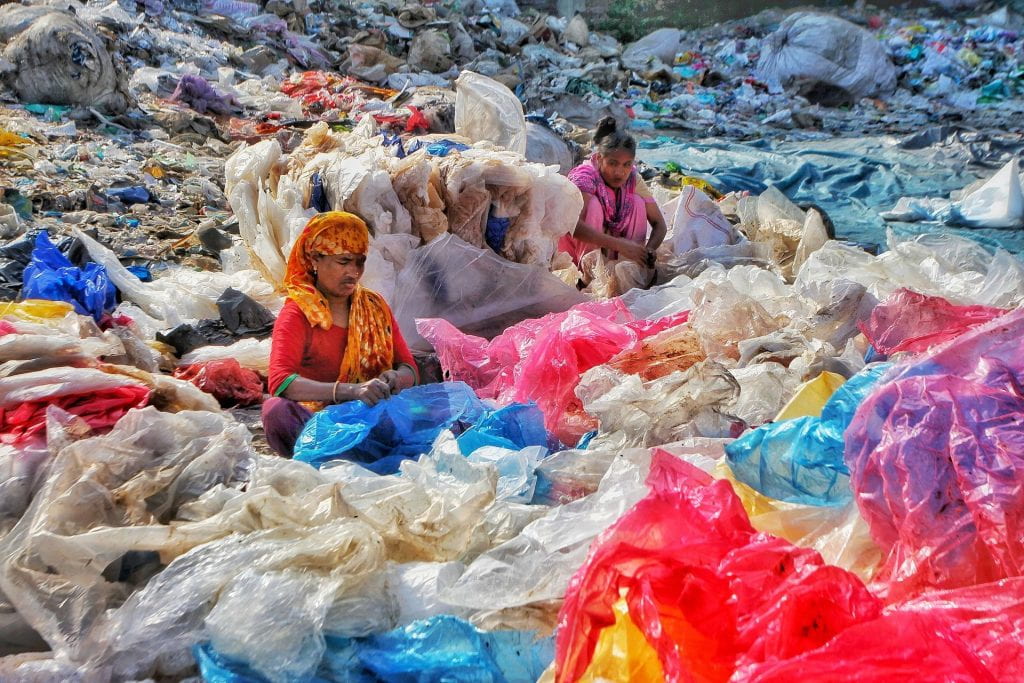
For my praxis experiment, I chose to go through a day without using single-use plastic. Early into the day, I realized how tricky of an exercise this would be, and I had to give myself permission to move through my day with an increased awareness rather than a restriction on plastic. It was impossible to make it through just one day without using plastic. While I tend to think of myself as an environmentally conscious human, this experiment has shown me that I certainly have room for improvement.
I took notes on my plastic use after my morning shower. My shampoo, body wash, and face cleanser are all in plastic bottles. Some of my beauty products (used after my shower in preparation for the day) are in glass bottles and some are in plastic. I assume that I am like many of us, and my toothbrush is also made from plastic, as it my toothpaste tube, dental floss box, and so on. I was overwhelmed and I had not left the house yet! By the time I got to my much-needed cup of coffee, I realized I talk the talk, but don’t walk the walk.
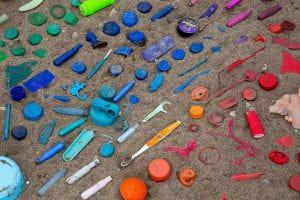
I typically use one Keurig pod per day to make my coffee. I don’t sit in a drive-through line with my car idling and drive away with a disposable cup, so this makes me feel somewhat better. I know they the plastic coffee pods are terrible for the earth and while I used to use the washable mesh container, I got lazy and started enjoying the ease of the disposable pod.
My work day was quite effortless in going plastic-free…I fill up my BPA-free water bottle from the water cooler, use cutlery that I bring in from home for all my meals, and bring my lunch and snacks in glass container (they have plastic lids, but not single-use plastic). However, my protein bar is wrapped in a plastic foil wrapper, and my mid-morning juice comes in a plastic bottle. As I made my way home, I picked up a package on my doorstep that was, you guessed it, wrapped in plastic. In making dinner, I found there to be plastic on so many things. While I recycle the single-use plastic from containers in the cupboard or fridge, there is strong evidence that illustrates the inefficiencies of recycling, so I don’t feel like that’s really doing much to help the root cause. Cleaning up from dinner, I caught a glimpse of my plastic soap dispenser (I do refill it and have been on the same one for well over a year now). Rather than using plastic wrap for the leftovers in the bowl, I used foil. I think that might be trading one evil for another, but I wanted to continue to try my best to avoid plastic.
As I got ready for bed, I was once again faced with the overwhelming amount of plastic when it comes to personal hygiene products. This was certainly not an easy exercise, and while I wasn’t able to make it through the day without plastic, I am grateful for the awareness that the exercise brought. It certainly started the wheels turning. How can I be better and lead by example?
How did we get to the place where we are so dependent on plastic? “Though plastic—a chain of synthetic polymers, essentially—was invented in the mid-19th century, it wasn’t until the 1970s that its popularity skyrocketed” (Single-Use Plastics 101). Through our desire for things to be convenient, portable, and deliver instant gratification, single-use plastic has permeated an unfathomable number of everyday items.

An albatross found dead with a belly full of plastic on Midway AtollCredit:Forest and Kim Starr via Flickr
Most of us can understand or see, firsthand, the damage that plastic is doing to the environment. From plastic bags and bottles washing up on beaches across the globe to poor children wading in rivers of plastic trash to animals (both land and sea) entangled in our waste, the evidence is all around us. Look at our insatiable human demand for things to constantly be newer, bigger, and better than the previous version, coupled with our desire for convenience and it’s not hard to see the ways in which we are harming the earth. This directly relates to ecofeminism and the ways that humans oppress Mother Nature. If we continue to abuse her the way that we have been, she may give up entirely, and we may be left with nothing at all.
In addition to the dangers that plastic causes to the world around us, it also has numerous harmful effects on our bodies. “Many of the chemicals in plastics are known endocrine disruptors, and research has suggested that human exposure could cause health impacts including hormonal imbalances, reproductive problems like infertility, and even cancer” (Single-Use Plastics 101). There is an op-ed piece published in the New York Times, which discusses the harmful effects of plastic and how microplastics are showing up in a measurable way, within our bodies (O’Connell). While the evidence of plastic within the human body is real, the effects of this are still being uncovered.
Do I consider my praxis to be successful? I do. While I “failed” in that I did use some single-use plastic throughout the day, my intention created more awareness, as well as a renewed sense of dedication to finding manageable alternatives. I am glad that I chose this exercise for my praxis assignment as it has helped me see where I can personally improve – be it with more eco-friendly replacement options, or cutting down on my capitalistic, consumer-driven need for consumption. As we have learned, ecofeminism looks at how women and the earth and connected and oppressed, and we see substantial evidence of this when looking at the detrimental effects plastic has on both our bodies and the earth.
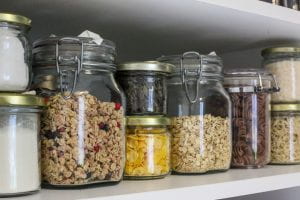
If reading this post has brought your own plastic use to your attention, you might be thinking “I’m just one person, what can I do?” There are a lot of things that one person can do, and maybe it’s helpful to think of one or a few small changes that can lead to a compounded, larger effect. Perhaps you start by bringing in washable cutlery to eat meals with while in the office. Maybe you’re committed to bringing both reusable shopping bags and eco-friendly produce bags to the grocery store. If you have been wanting to transition to glass storage containers, this could be the prompt you have been waiting for. Young girls and women who are menstruating can opt for more eco-friendly options – check out this resource guide for more details.
Is there anything that you can think to start with that will help reduce your single-use plastic consumption? There are so many small steps that we can each take towards eliminating single-use plastic, and it will help reduce the amount of plastic that we need to manufacture as well as the amount of plastic that winds up in landfills or the ocean. Check out some of the sites below with some ideas to get you started. Have a favorite practice you already enjoy? Please share in the comments below!
The Best Eco-Friendly Alternatives for the Plastic in Your Life | Eartheasy Guides & Articles
https://parenting.firstcry.com/articles/10-alternatives-to-plastic-to-bring-into-your-daily-life/
Works Cited
O’Connell, Mark. “Opinion | What Is the Plastic in Our Bodies Doing to Us?” The New York Times, 21 Apr. 2023, www.nytimes.com/2023/04/20/opinion/microplastics-health-environment.html.
Single-Use Plastics 101. 9 Jan. 2020, www.nrdc.org/stories/single-use-plastics-101#what.

